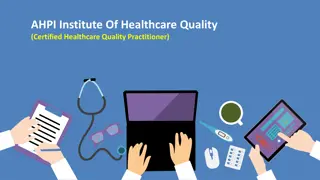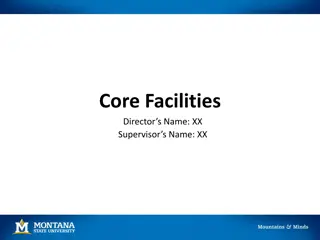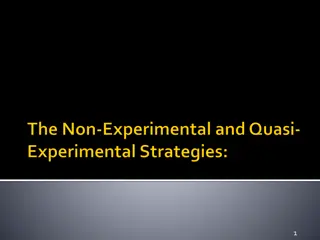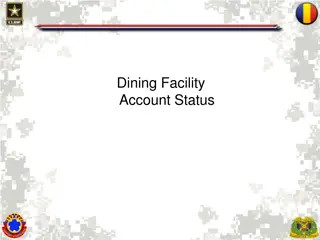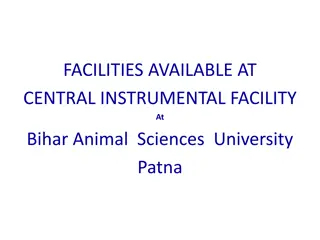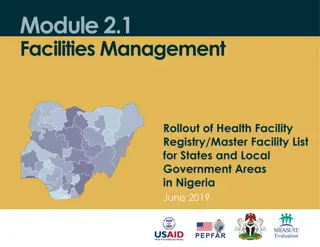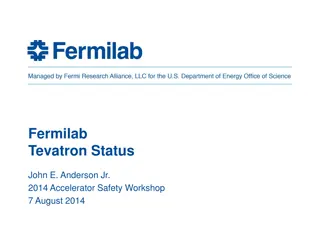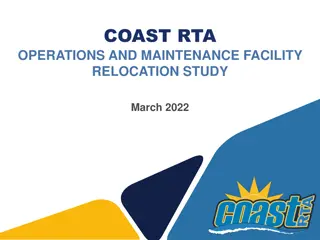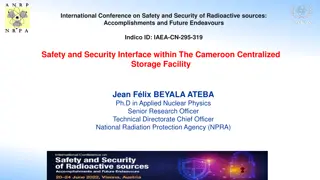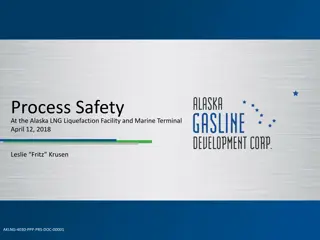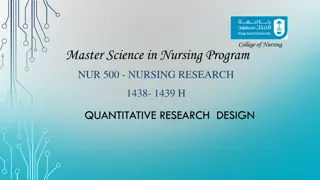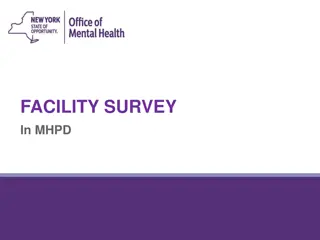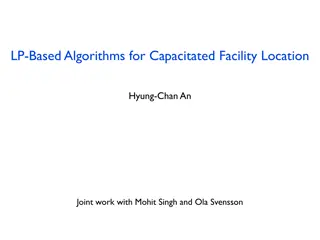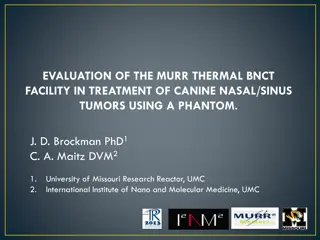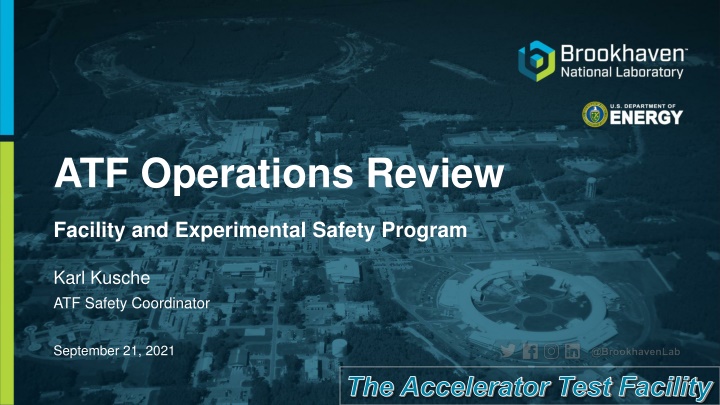
Accelerator Test Facility Safety Program Review
Enhance safety measures at the Accelerator Test Facility through structured programs focusing on staff training, operational procedures, and experimental safety. Collaborate with the C-AD OPM system to ensure a comprehensive safety framework for operations and maintenance. Detailed safety protocols, user training, and hazard management contribute to a secure testing environment at the facility.
Uploaded on | 11 Views
Download Presentation

Please find below an Image/Link to download the presentation.
The content on the website is provided AS IS for your information and personal use only. It may not be sold, licensed, or shared on other websites without obtaining consent from the author. If you encounter any issues during the download, it is possible that the publisher has removed the file from their server.
You are allowed to download the files provided on this website for personal or commercial use, subject to the condition that they are used lawfully. All files are the property of their respective owners.
The content on the website is provided AS IS for your information and personal use only. It may not be sold, licensed, or shared on other websites without obtaining consent from the author.
E N D
Presentation Transcript
ATF Operations Review Facility and Experimental Safety Program Karl Kusche ATF Safety Coordinator September 21, 2021 The Accelerator Test Facility
Facility Safety Program Specified by BNL SBMS and C-AD OPMs Facility work planning work permit process Experimental work planning ESR process ATF operations and maintenance procedures are maintained in the C-AD Operations Procedures Manuals (OPM) system Grouped into subchapters for ATF and UED ATF submits changes through C-AD review process https://www.c-ad.bnl.gov/OPMTOC/OPM_PP_List_By_Chapter.aspx?Chapter=21 2
Facility Safety Program (contd) ATF will be operating under the C-AD OPM system for one more year Post-ARR we will work under an ATRO-maintained structure 3
Facility Safety Monthly verification of Staff/User training and ESR status Quarterly audits of Operational Logs (Linac, ATF keybox, LOTO) Random TLD verification Active LOTO and RS-LOTO programs Shielding permit process for configuration control Interlock recertifications (Radiation safety systems, Modulators, Lasers, etc.) 4
ATF Staff and User Training Starts with the ATF Awareness course Required for all ATF staff and Users for unescorted facility access Comprised of online course, classroom session and facility tour - Training requirements - Emergency procedures and contact information - Facility-specific safety, procedures and operations Emphasizes laser, radiation, shielding and interlock safety 5
ATF Staff Training Each ATF staff member requires: JTA courses for ATF ATF Awareness, Laser Safety, SMF, Basic Electrical Safety, LOTO Awareness GERT & TLD Specialized training is assigned as needed Compressed Gas, Cryogens, Laser Facility-specific, Operators, etc. 6
Experimental Safety Program Goals Each experiment undergoes a Departmental safety review Training requirements for every on-site User Maximize Capture of experimental hazards Completion of training, beamline preparations, etc. prior to arrival Coordination of User team and ATF staff for planning, installation, etc. Minimize Complexity for the new User Time between arrival and start of experiment (<1/2 day) 7
User training and requirements First new user contact typically follows ATF PAC approval of proposal Guidance is supplied - Guest registration - Training requirements and links - Experimental Safety Review (ESR) ESR process is initiated with request for experiment information from PI User vs. Visitor status 8
Training: Visitor Visitor status is typically used for single day visits or work confined to computer use or data analysis in the ATF control room Alleviates training requirements Restricted access Requires Visitor TLD with constant escort throughout facility 9
Training: User ATF/UED Users are required to complete the full list of training courses Includes General Radiation (GERT), Laser Safety, Static Magnetic Field Safety All are available online from offsite, which allows for completion prior to arrival One initial facility-specific ATF Awareness classroom with tour Fast turn-around achieved (<1/2 day) 10
Training: User (contd) Completion of GERT enables TLD, required for access into Radiological Controlled Areas Additional training requirements for: Entry into interlocked Class IV laser controlled areas Use of cryogens, chemicals, hazardous materials, etc. 11
Experimental Safety Review (ESR) process PI supplies information to the ATF Safety Coordinator Exp/PI names, description, layout, hazards and controls, personnel & training Online form populated and submitted to the C-AD ESR Committee (ESRC); review requested Initial review typically involves presentation by PI to ESRC, annual renewal online, re-review for addition/change of hazards 12
ESR process PAC = Program Advisory Committee PI = Principle Investigator C-AD = Collider Accelerator Department ESRC = Experimental Safety Review Committee RSC = Radiation Safety Committee USI = Unreviewed Safety Issue ATF PAC approval PI supplies info to ATF Safety Coord. Create & submit ESR USI screening C-AD ESSHQ Div. C-AD ESRC review (-) USI (+) 13
ESR process (contd) C-AD ESSHQ Div. ESRC review (-) Other committees (RSC, Cryo, Electrical) USI (+) Hazard Controls defined LESHC, ASSRC Assigned to PI, ATF staff, C-AD, etc. Radiation fault studies Approval to start 14
Experimental configurations Electron beam only (single bunch, pulsetrain) Laser only (ATF TW CO2, NIR) Combined electron & laser beams Experiment-specific hazards: Hydrogen gas, HV, cryogenic detectors, in-vacuum targets, additional lasers, custom undulators and in-vacuum magnetic assemblies, radiation/shielding, etc. UED: samples/nanoparticles, cryogens, beamline modifications (SMF, radiation hazards) 15
Example: AE93 Laser Wakefield experiment, which requires flammable gas and high-power laser 1) Flammable gas system: - Review/inspections, prep/upgrade, testing - ESRC sub-cmte & ATF staff - Two month process 2) High power laser (ATF TWCO2): - Review/inspections, - Radiation surveys - RSC, ATF staff - Two month process 16
Summary All experiments require review, and most Users require training ATF fully supports & expedites the experimental safety review and training processes for Users Goal <1/2 day from arrival to experiment We are reviewing and updating all ATF OPMs and training elements to implement current best practices. These revisions will take effect after the ARR. 17
Questions Thank you! 18




